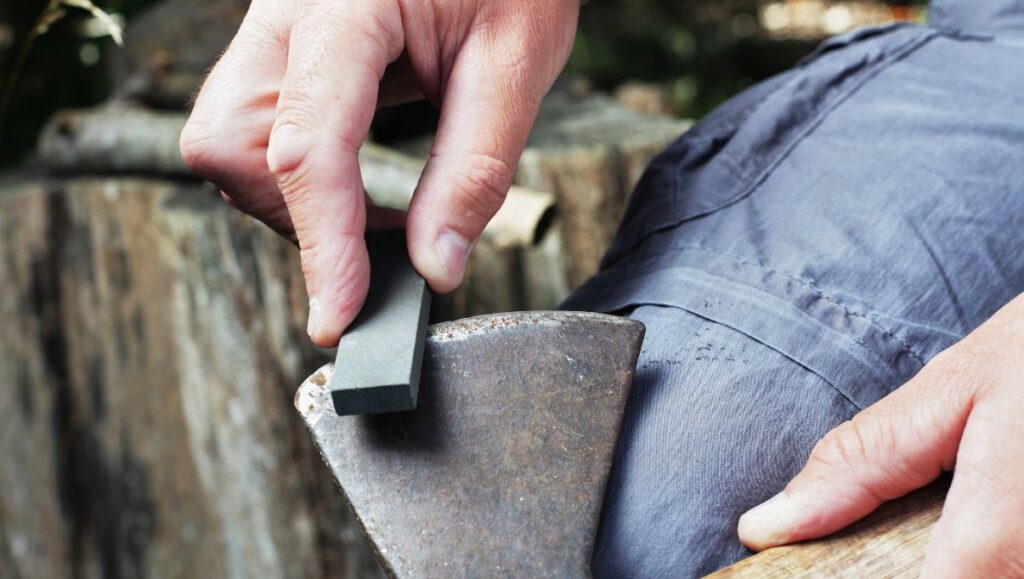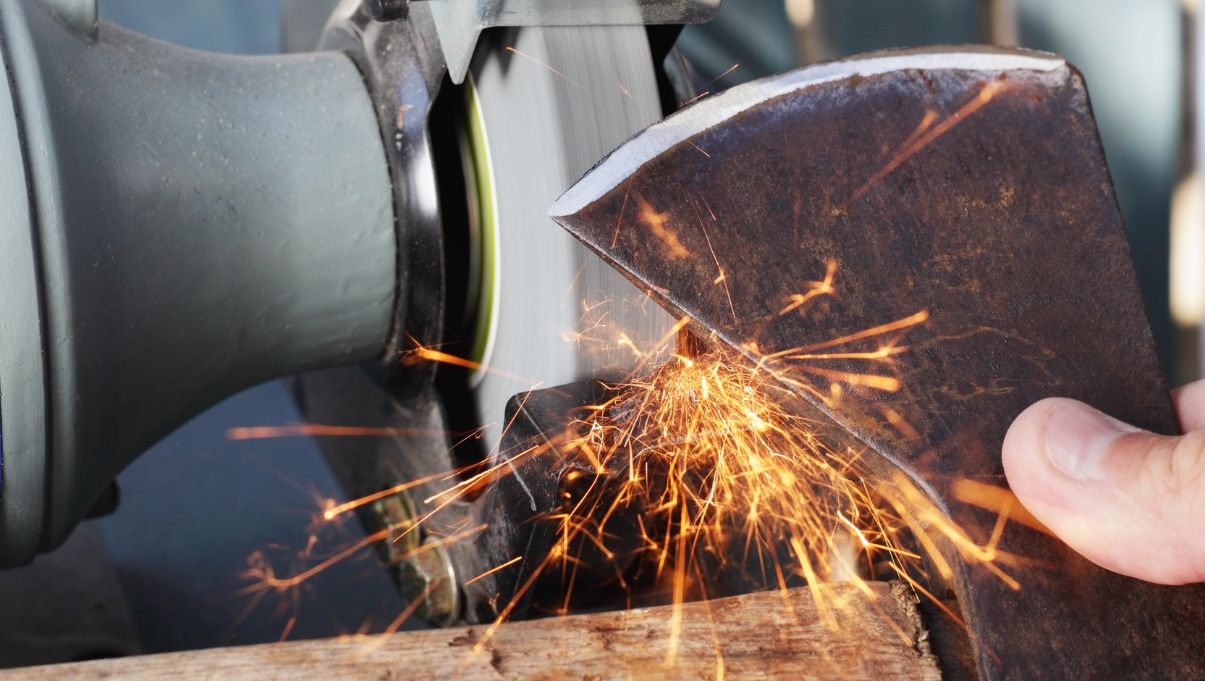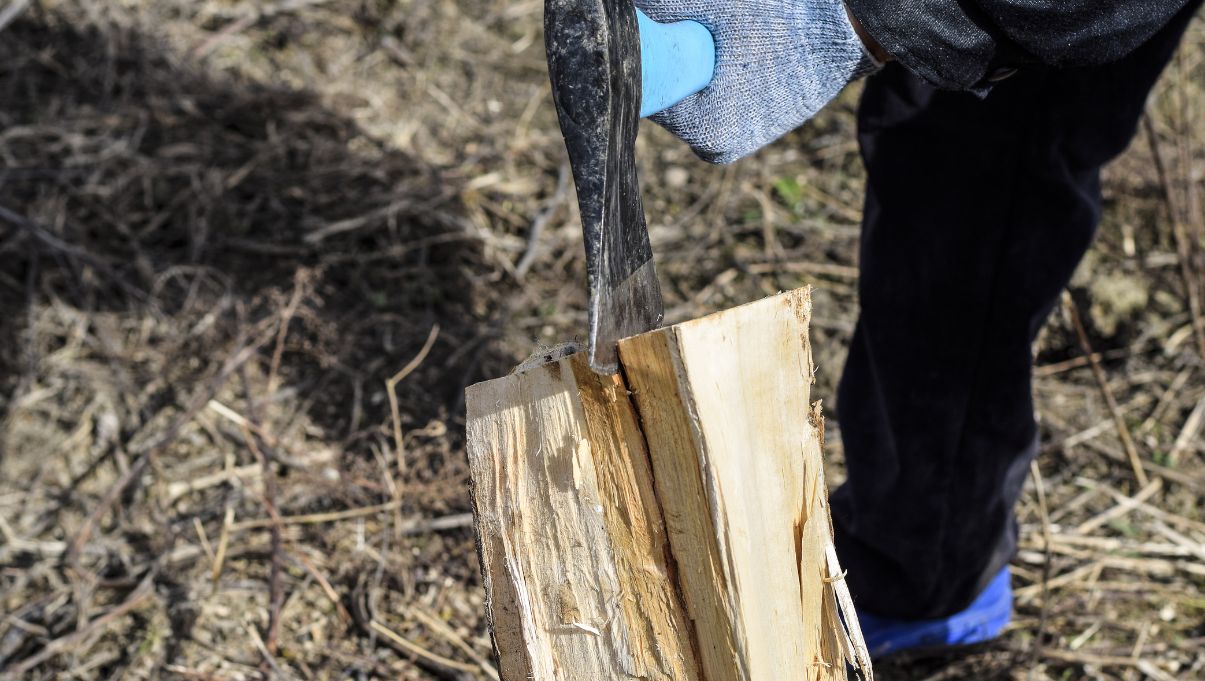Introduction
A sharp axe is essential for efficient cutting and chopping tasks. Over time, the blade of an axe can become dull and require sharpening. Sharpening an axe with a stone is a traditional and effective method that allows you to restore the sharpness of the blade. In this guide, we will provide you with step-by-step instructions on how to sharpen an axe with a stone, along with essential tips to ensure a successful sharpening process.
Understanding the Axe Blade
Before diving into the sharpening process, it is important to understand the shape and bevels of the axe blade. Most axe blades have two main bevels: the primary bevel and the secondary bevel. The primary bevel is the wider angle that forms the cutting edge, while the secondary bevel is a narrower angle that provides additional sharpness. When sharpening, the focus should primarily be on the primary bevel.
How to Sharpen an Axe with a Stone?
Tools Required:
To sharpen an axe with a stone, you will need the following tools:
- Axe stone or sharpening stone: Choose a sharpening stone with a medium or coarse grit suitable for sharpening axe blades.
- Honing oil or water: Lubricant to facilitate the sharpening process and prevent overheating of the blade.

Step-by-Step Instructions:
Follow these steps to sharpen your axe using a stone:
- Secure the axe: Find a stable surface or workbench to secure the axe firmly. You can use clamps or a vice to hold the axe in place during the sharpening process.
- Prepare the stone: Moisten the sharpening stone with honing oil or water, following the manufacturer’s instructions. This helps lubricate the stone and prevent the axe blade from overheating.
- Determine the bevel angle: Examine the existing bevel angle of the axe blade. Typically, the primary bevel is around 20 to 25 degrees. Maintain this angle while sharpening.
- Start with the primary bevel: Position the stone against the primary bevel of the axe blade. With one hand on the handle and the other on the stone, apply light pressure and move the stone in a circular or back-and-forth motion along the bevel. Ensure the entire bevel is evenly sharpened.
- Maintain a consistent angle: As you sharpen, maintain a consistent angle by following the existing bevel. This ensures an even and uniform sharpening across the blade.
- Check for burrs: After several passes on the primary bevel, inspect the edge for the presence of a burr. A burr indicates that the primary bevel is sharpened. To remove the burr, turn the axe over and lightly run the stone along the backside of the blade.
- Refine with the secondary bevel (optional): If your axe has a secondary bevel, you can further refine the sharpness by lightly running the stone along the secondary bevel. Be careful not to apply excessive pressure or alter the existing bevel angle.
- Test the sharpness: Once you are satisfied with the sharpening, carefully test the sharpness of the axe blade. Use caution during this step to prevent accidental cuts or injuries.
- Clean and oil the axe: After sharpening, clean the axe blade thoroughly to remove any debris or metal shavings. Apply a light coat of oil to protect the blade from rusting.
Tips for Effective Axe Sharpening
- Maintain a consistent angle: Consistency in maintaining the bevel angle is key to achieving an evenly sharpened blade. Practice maintaining the angle to develop better control and accuracy.
- Use light pressure: Applying excessive pressure while sharpening can lead to uneven sharpening or damage to the blade. Use a gentle and controlled pressure to achieve the desired results.
- Keep the stone clean: Regularly clean the stone during the sharpening process to remove metal particles or debris that may affect the sharpening effectiveness.
- Practice safety precautions: Wear safety goggles or glasses to protect your eyes from any stray metal particles. Additionally, exercise caution while handling sharp tools to prevent accidents.

FAQs
How often should I sharpen my axe?
The frequency of sharpening depends on the usage and condition of your axe. As a general guideline, sharpen your axe when you notice a decrease in cutting efficiency or if the blade appears dull.
Can I use a different type of stone for sharpening?
While a specialized axe stone or sharpening stone is recommended, you can use other types of sharpening stones such as oil stones or diamond stones. Ensure the stone has a suitable grit for axe sharpening.
How many strokes are needed to sharpen an axe?
The number of strokes required depends on the condition of the blade and the sharpness desired. Start with a few passes on the primary bevel, periodically checking for the presence of a burr, and continue until the desired sharpness is achieved.
Can I sharpen a damaged or chipped axe blade with a stone?
A stone is primarily used for sharpening dull blades. For damaged or chipped blades, it is advisable to seek professional assistance or consider re-profiling the blade.
Conclusion
Sharpening an axe with a stone is a rewarding skill that ensures a sharp and efficient cutting edge. By following the step-by-step instructions provided in this guide and implementing the essential tips, you can maintain the sharpness of your axe blade, prolong its lifespan, and enhance your cutting experience. Remember to prioritize safety, maintain a consistent bevel angle, and regularly inspect and maintain your axe to ensure optimal performance.



